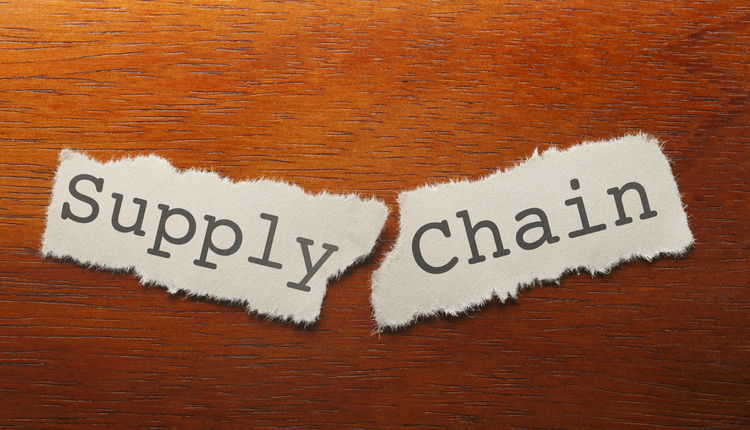Retail sales remained resilient in 2014 with an overall projected growth of 4.0% despite inclement weather, labor issues that plagued the West Coast ports and early inventory build-ups. FedEx cited the West Coast labor issues as a primary cause for missing quarterly earnings and as of mid-January the issues still had not been resolved. Many retailers were publicly bullish over holiday season sales, however, the actual sales numbers demonstrate consumers behaving cautiously as we move into 2015. According to the Department of Commerce, December reported a 0.9% decline in retail sales as compared to November. Sales results were classified by leading economists as “weak” especially considering the massive drop in gasoline prices in Q4 2014.
Macy’s and JC Penney announced positive sales results for the nine-week holiday period between November and December. Macy’s sales were up 3.6% and JC Penney sales increased 3.7%. In addition, Mastercard noted that overall sales were up 5.5% from Thanksgiving weekend through Christmas Eve. Despite these favorable results, both Macy’s and JC Penney have announced brick and mortar closures. The growth of online sales is beginning to impact the look, shape, and function of these physical store locations. IKEA announced in January the opening of new stores in Canada that are specifically designed to target customers preferring in store pick-up for online order delivery options. And yes, it appears delivery providers, FedEx and UPS, also performed much better on behalf of retailers during the season.
Considering these results, what will 2015 bring for retailers? Retailers are facing mounting competitive pressure to offer a variety of options to customers such as free shipping, same and/or next day delivery and in-store pick up. With 2015 parcel shipping rates projected to realize the largest increases in decades, will retailers be able to continue to offer such options? In early January, labor groups for the West Coast ports agreed to federal mediation, prolonging the uncertainty of goods arriving on time. Will retailers rethink their inventory replenishment strategies? Will the economy continue to improve? These are among the numerous questions retailers are facing as they enter 2015.
As the glow from the 2014 holiday season fades into 2015, retailers are trying to extend their holiday success by continuing sales into the New Year. The holiday season was one of fierce competition and heavy promotions as retailers offered free shipping and extended days in which to shop online and receive gifts in time for Christmas. As a result, retailers’ profit margins were pressured.
Gift cards proved to be another popular method by which to lure shoppers into stores. According to Starbucks, one out of seven Americans received a Starbucks gift card this past holiday season. However, roughly $1 billion worth of gift cards will go unused in 2015, according to CEB TowerGroup. Many recipients either lose them or can’t figure out what to buy. Gift cards are often given as currency for returns, and those returns then become part of the peak season for reverse logistics. While returns are certainly another method of attracting consumers back into stores, it also is costly for retailers. How to manage these effectively while maintaining profitability is a question on many retailers’ minds. UPS announced it would handle over four million returns during the first full week of January. The delivery giant designated January 6 as ‘UPS National Returns Day,’ and expected to return more than 800,000 packages to retailers and merchants. Unfortunately, according to a recent NRF survey, 5% of all holiday returns will be fraudulent and will result in a projected loss of $3.8 billion.
Even as retailers consider their promotional activities, inventory replenishment trends are changing. Improved visibility, garnered by advancements in inventory management systems, has permanently changed replenishment calendars. IT investments have resulted in retailers gaining more insight into available inventory within fulfillment centers and stores. As a result, retailers are waiting longer to place orders with manufacturers and suppliers. However, retailers still need to be aware of possible risks such as the US West Coast port situation and be able to adjust transportation needs accordingly. Still, despite uncertainty surrounding rising costs and profitability concerns, retailers are optimistic for 2015.
In order to fully benefit from the improving economy, retailers will need to focus on cost containment and improve profitability. Supply chains need to be optimized in order to compete effectively against a growing list of competitors both on and offline. Additionally supply chains need to put contingency plans in place accounting for unforeseen risks similar to what occurred in 2014.
Macy’s and JC Penney announced positive sales results for the nine-week holiday period between November and December. Macy’s sales were up 3.6% and JC Penney sales increased 3.7%. In addition, Mastercard noted that overall sales were up 5.5% from Thanksgiving weekend through Christmas Eve. Despite these favorable results, both Macy’s and JC Penney have announced brick and mortar closures. The growth of online sales is beginning to impact the look, shape, and function of these physical store locations. IKEA announced in January the opening of new stores in Canada that are specifically designed to target customers preferring in store pick-up for online order delivery options. And yes, it appears delivery providers, FedEx and UPS, also performed much better on behalf of retailers during the season.
Considering these results, what will 2015 bring for retailers? Retailers are facing mounting competitive pressure to offer a variety of options to customers such as free shipping, same and/or next day delivery and in-store pick up. With 2015 parcel shipping rates projected to realize the largest increases in decades, will retailers be able to continue to offer such options? In early January, labor groups for the West Coast ports agreed to federal mediation, prolonging the uncertainty of goods arriving on time. Will retailers rethink their inventory replenishment strategies? Will the economy continue to improve? These are among the numerous questions retailers are facing as they enter 2015.
As the glow from the 2014 holiday season fades into 2015, retailers are trying to extend their holiday success by continuing sales into the New Year. The holiday season was one of fierce competition and heavy promotions as retailers offered free shipping and extended days in which to shop online and receive gifts in time for Christmas. As a result, retailers’ profit margins were pressured.
Gift cards proved to be another popular method by which to lure shoppers into stores. According to Starbucks, one out of seven Americans received a Starbucks gift card this past holiday season. However, roughly $1 billion worth of gift cards will go unused in 2015, according to CEB TowerGroup. Many recipients either lose them or can’t figure out what to buy. Gift cards are often given as currency for returns, and those returns then become part of the peak season for reverse logistics. While returns are certainly another method of attracting consumers back into stores, it also is costly for retailers. How to manage these effectively while maintaining profitability is a question on many retailers’ minds. UPS announced it would handle over four million returns during the first full week of January. The delivery giant designated January 6 as ‘UPS National Returns Day,’ and expected to return more than 800,000 packages to retailers and merchants. Unfortunately, according to a recent NRF survey, 5% of all holiday returns will be fraudulent and will result in a projected loss of $3.8 billion.
Even as retailers consider their promotional activities, inventory replenishment trends are changing. Improved visibility, garnered by advancements in inventory management systems, has permanently changed replenishment calendars. IT investments have resulted in retailers gaining more insight into available inventory within fulfillment centers and stores. As a result, retailers are waiting longer to place orders with manufacturers and suppliers. However, retailers still need to be aware of possible risks such as the US West Coast port situation and be able to adjust transportation needs accordingly. Still, despite uncertainty surrounding rising costs and profitability concerns, retailers are optimistic for 2015.
In order to fully benefit from the improving economy, retailers will need to focus on cost containment and improve profitability. Supply chains need to be optimized in order to compete effectively against a growing list of competitors both on and offline. Additionally supply chains need to put contingency plans in place accounting for unforeseen risks similar to what occurred in 2014.



















